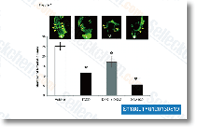This demonstrates the P. falciparum equivalent residue of human eIF2 Ser51 is phosphorylated in response to starvation. Identification of eIF2 kinases in P. falciparum Bioinformatics approaches have been then implemented to identify P. falciparum protein kinase probably liable for this response. An evaluation in the finish complement of P. falciparum protein kinases identified a distinct phy logenetic cluster of three sequences, PF14 0423, PFA0380w and PFF1370, the latter of which had previously been characterized as an eIF2 kinase, Reciprocal BLASTP examination making use of the putative catalytic domains as queries confirmed the homology of those three genes with all the eIF2 kinase family. A Hidden Markov Model was made use of to make an alignment with the three P. falciparum sequences with people of human eIF2 kinases. sequences of kinases from other families have been included as outgroups.
The resulting alignment was employed to produce a phylogenetic tree, which obviously displays the three P. falciparum genes cluster using the eIF2 kinases, instead of other kinase fami lies, confirming their relatedness to this household. Curiosity ingly PfeIK1, on which the present research focuses, clusters most closely with GCN2, and that is sugges tive of a part in response to nutrient ranges. The PF14 0423 selleckchem gene model proposed in PlasmoDB predicts a single intron that falls shut to the 5 end of the sequence to ensure the kinase domain is encoded totally in the second exon. Every one of the residues that happen to be demanded for catalytic activity are present during the kinase domain, suggesting the gene encodes an energetic enzyme. The sequence shares the characteristic of insertions inside the cata lytic domain with other eIF2 kinases, Three within the human eIF2 kinases have N termi nal extensions containing regulatory domains.
the fourth, GCN2, has extensions on both side in the kinase domain, As PfeIK1 has extensions on the two sides of the catalytic domain, it’s most equivalent to GCN2 not simply in the sequence of its catalytic domain, since the phylo genetic tree demonstrates, but additionally in overall construction, In addition, the selleck chemicalMdivi-1 C terminal exten sion of PfeIK1 contains an anti codon binding  domain that could mediate binding to uncharged tRNAs, a function that is definitely carried out in GCN2 from the HisRS domain existing in the C terminal extension, This adds fat towards the possi bility that PfeIK1 is involved in the response to amino acid starvation, like GCN2.
domain that could mediate binding to uncharged tRNAs, a function that is definitely carried out in GCN2 from the HisRS domain existing in the C terminal extension, This adds fat towards the possi bility that PfeIK1 is involved in the response to amino acid starvation, like GCN2.
Phosphatases
A phosphatase is an enzyme
